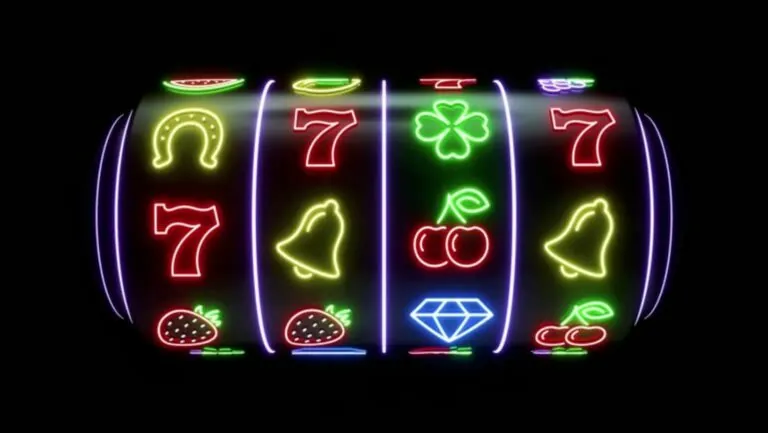Table of Contents
ToggleIn the battle of the virtual titans, two gaming giants stand tall: Fortnite and Roblox. Each has its loyal fanbase, but which one truly reigns supreme? Picture this: Fortnite’s vibrant battle royale, where players drop from the Battle Bus like confetti, versus Roblox’s vast universe of user-generated experiences, where creativity knows no bounds. It’s a showdown that’s got gamers everywhere glued to their screens.
As they dive into this digital duel, players might find themselves asking: is it the thrill of building and battling in Fortnite that keeps them hooked, or is it the endless possibilities of creating and exploring in Roblox? With millions of players worldwide, the stakes are high. Get ready to discover the quirks, the stats, and maybe even a few laughs as we unravel this epic rivalry. Who will take the crown in this gaming popularity contest?
Overview of Fortnite and Roblox
Fortnite features a battle royale format that captivates players with its fast-paced gameplay. Released in 2017, it quickly became a global phenomenon, attracting over 350 million registered users by 2020. Players engage in thrilling matches where survival skills shape the experience. Seasonal events and collaborations with popular franchises maintain player interest, ensuring a steady influx of content.
Roblox, on the other hand, emphasizes creativity and user-generated experiences. Launched in 2006, it welcomes over 200 million monthly active users as of 2021. The platform allows players to design their games and worlds, fostering a vibrant community. Unique game genres range from adventure to simulations, accommodating diverse player preferences.
Fortnite’s appeal lies in its competitive nature and dynamic battles. Engaging mechanics and regular updates keep the gameplay fresh and exciting. Players thrive on proving their skills in intense matches against opponents worldwide. Its culturally relevant collaborations, such as those with artists and celebrities, further enhance its popularity.
Conversely, Roblox’s attractiveness stems from its limitless creativity and social interactions. Users forge friendships while exploring various creations, promoting a sense of camaraderie within the community. The platform’s educational aspects also draw interest, as players learn game development through scripting and design.
Both platforms boast impressive player engagement and innovative features. Statistical comparisons will shed light on their respective user bases and trends. Analyzing these aspects provides insight into the ongoing rivalry between Fortnite and Roblox.
Comparing Popularity Metrics
Comparing Fortnite and Roblox reveals significant differences in their popularity metrics. Both games attract millions, but specific statistics highlight their unique strengths.
Player Base Statistics
Fortnite’s explosive growth since its 2017 release showcases its pull, with over 350 million registered users reported by 2020. Roblox, meanwhile, has created a community of over 200 million monthly active users as of 2021. Engagement levels for both platforms are noteworthy, with Fortnite’s competitive gameplay appealing to action fans. Roblox’s focus on user-generated content caters to creative minds, resulting in diverse playing experiences. Consistent updates and events keep Fortnite’s community engaged, while Roblox’s myriad of game options entices players to explore new creations.
Social Media Presence
Social media metrics underscore Fortnite’s dominance in digital engagement. The game frequently garners millions of tweets and posts, showcasing its cultural impact. Conversely, Roblox maintains a strong following, cultivating a robust community through platforms like TikTok and YouTube. Players of both games actively share content, driving engagement and creativity. Fortnite’s iconic dances and skins fuel viral trends, while Roblox’s user-generated content sparks conversations. Engagement strategies used by both platforms effectively maintain their visibility in a competitive landscape, contributing to their ongoing popularity.
Gameplay Experience
The gameplay experience in Fortnite and Roblox offers distinct features that attract different types of players.
Game Mechanics in Fortnite
Fortnite harnesses building mechanics and combat strategies. Players construct structures using resources collected during matches. Fast-paced battles unfold as players engage in team or solo fights. Each season introduces new items and map changes, keeping the experience fresh. The game utilizes a vibrant art style, appealing to a wide demographic. Epic Games emphasizes limited-time events and collaborations, enhancing player engagement. Competitive players find solace in various game modes that challenge their skills and tactics.
Game Mechanics in Roblox
Roblox champions user-generated content and social interaction. Players can create games using Roblox Studio, making it a versatile platform. Game genres vary widely, from obstacle courses to role-playing scenarios. Various user-created experiences allow players to personalize their adventures. Customization features offer diverse character designs and in-game items. Community-driven quests and events keep players returning to explore new creations. This emphasis on creativity fosters a communal atmosphere, encouraging collaboration among players.
Cultural Impact
Cultural influence shapes the success of both Fortnite and Roblox. Each platform has created a unique landscape for gamers and developers.
Merchandise and Branding
Fortnite excels in merchandise sales, with over 1 billion dollars in retail revenue from branded clothing, accessories, and toys. Collaborations with iconic franchises like Marvel and Star Wars amplify brand visibility. Players frequently sport character skins from their favorite games, further solidifying brand loyalty. Roblox, meanwhile, embraces a different model, leveraging user-generated content to cultivate a marketplace of virtual items. The platform supports creators by allowing them to sell apparel and accessories, fostering entrepreneurial spirit among its users. This community-driven approach fuels engagement, making players feel connected to the brand. Notably, Roblox’s merchandise, including plush toys and apparel, generated substantial revenue, further establishing its brand presence.
Community Engagement
Community engagement remains a cornerstone for both platforms. Fortnite engages through weekly updates and seasonal events, keeping players invested. The frequent introduction of new challenges fosters a dynamic player experience that encourages participation. Players often share their gameplay on platforms like Twitch and YouTube, creating a robust online culture. Roblox takes a different route, emphasizing user-generated content that thrives on creativity. Its extensive developer community contributes to an ever-changing catalog of games. Social media plays a crucial role in this engagement, as players frequently showcase their creations on platforms like TikTok and Instagram. Both Fortnite and Roblox harness community involvement to enhance player experiences and extend their reach in the gaming world.
Summary of Findings
The article analyzes the competition between Fortnite and Roblox, both of which attract large, dedicated audiences. Fortnite’s action-oriented gameplay captivates players with its fast-paced battle royale style. This approach helped the game gain over 350 million registered users by 2020, driven by exciting seasonal events and regular updates.
Roblox’s focus on user-generated content also plays a crucial role in its appeal. Launched in 2006 and embracing creativity, it attracted more than 200 million active users monthly by 2021. Players thrive in an environment that allows them to design games and share creations, promoting a sense of community.
When comparing popularity, key metrics illustrate noticeable differences. Fortnite maintains a strong social media presence, generating millions of posts and tweets that reflect its cultural significance. On the other hand, Roblox engages users through platforms like TikTok, where creative content sharing among players flourishes.
Gameplay experience further distinguishes both platforms. Fortnite emphasizes combat strategies alongside building mechanics, offering dynamic battles and new seasonal experiences. In contrast, Roblox encourages creativity through its diverse game genres, fostering collaboration among users.
Cultural impact remains significant for both platforms. Fortnite’s partnership with well-known franchises, such as Marvel and Star Wars, has generated over $1 billion in merchandise revenue. Roblox empowers creators to monetize their designs, promoting an entrepreneurial spirit within its community.
Fortnite and Roblox each excel in unique ways. Their respective player bases engage differently, with Fortnite appealing to action lovers and Roblox catering to creative minds. Community interaction and distinct gameplay experiences form the foundation of their ongoing popularity in the gaming landscape.
The rivalry between Fortnite and Roblox highlights the diverse preferences in the gaming community. While Fortnite captivates players with its fast-paced action and regular updates, Roblox thrives on creativity and user-generated content. Each platform offers unique experiences that cater to different gaming styles.
As they continue to evolve and engage their respective audiences, both Fortnite and Roblox have cemented their places in the gaming landscape. Their distinct approaches ensure they’ll remain popular choices for years to come, appealing to action lovers and creative minds alike.







